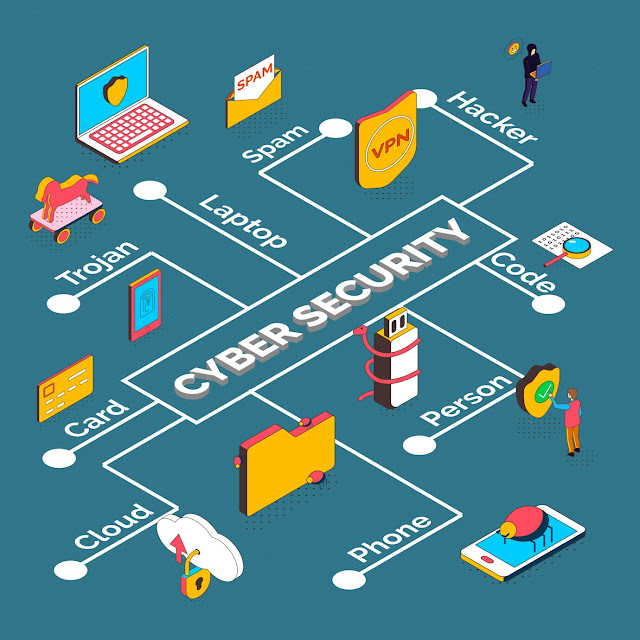10 Essential Steps to Cybersecurity
In today's interconnected digital world, ensuring robust cybersecurity measures is paramount for individuals and organisations alike. With cyber threats evolving in sophistication and frequency, it's crucial to adopt a proactive approach to protect sensitive data and mitigate potential risks. In this comprehensive guide, we'll outline 10 essential steps to cybersecurity that can fortify your defences and safeguard your digital assets.
1. Assess Your Assets and Risks
Begin by conducting a thorough assessment of your digital assets and potential vulnerabilities. Identify sensitive data, critical systems, and potential entry points for cyber attacks. Understanding your assets and risks lays the foundation for developing a tailored cybersecurity strategy.
2. Implement Strong Password Practices
Enforce the use of strong, unique passwords for all accounts and systems. Encourage the use of passphrase combinations that include a mix of letters, numbers, and special characters. Consider implementing multi-factor authentication (MFA) to add an extra layer of security.
3. Keep Software and Systems Updated
Regularly update operating systems, software applications, and firmware to patch known vulnerabilities. Enable automatic updates whenever possible to ensure timely protection against emerging threats. Outdated software is often targeted by cybercriminals seeking to exploit known weaknesses.
4. Educate and Train Employees
Invest in cybersecurity awareness training for all employees to cultivate a culture of security within your organisation. Teach them to recognise phishing attempts, malware threats, and social engineering tactics. Empowering employees to identify and report suspicious activity can significantly enhance your overall security posture.
5. Secure Your Network
Implement robust network security measures, including firewalls, intrusion detection systems (IDS), and virtual private networks (VPNs). Encrypt data transmissions to protect sensitive information from interception. Regularly monitor network traffic for anomalous behaviour that may indicate a potential breach.
6. Back Up Data Regularly
Establish a routine backup schedule to safeguard critical data against loss or corruption. Store backups securely, preferably in an offsite location or on a cloud-based platform. Test backup and recovery processes periodically to ensure they remain effective in the event of a cyber incident.
7. Develop an Incident Response Plan
Create a comprehensive incident response plan outlining procedures for detecting, assessing, and mitigating cybersecurity incidents. Assign roles and responsibilities to designated team members and establish communication protocols for reporting and escalating incidents. Regularly review and update the plan to reflect evolving threats and organisational changes.
8. Monitor and Audit
Implement continuous monitoring and auditing mechanisms to detect unauthorised access, suspicious activities, and potential security breaches. Utilise security information and event management (SIEM) systems to aggregate and analyse log data from various sources. Conduct regular security audits to assess compliance with policies and identify areas for improvement.
9. Establish Secure Vendor Relationships
Vet third-party vendors and service providers to ensure they adhere to stringent security standards and practices. Require vendors to sign agreements outlining their security responsibilities and protocols for handling sensitive data. Regularly assess vendor security posture and performance to mitigate supply chain risks.
10. Stay Informed and Adapt
Remain vigilant against emerging cyber threats by staying informed about the latest trends, vulnerabilities, and attack techniques. Participate in cybersecurity forums, conferences, and information-sharing initiatives to exchange knowledge and best practices with industry peers. Continuously evaluate and refine your cybersecurity strategy to adapt to evolving threats and technological advancements.
Following these ten essential steps to cybersecurity, you can strengthen your organisation's defences, mitigate risks, and protect your digital assets from a wide range of cyber threats.
Remember, cybersecurity is a continuous process that requires ongoing vigilance, education, and collaboration across all levels of an organisation. Stay proactive, stay informed, and stay secure in an increasingly interconnected world.
Insightful? Follow us for more.
Reach out to us for approaches that secures your digital and information assets, ensuring comprehensive protection and compliance.
Read about our partnership with PECB.
Contact us +234 706 970 3016, +1 438 509 7383 to get started.
Feel free to follow us on Facebook, LinkedIn, Twitter, Youtube and Instagram.

Comments
Post a Comment